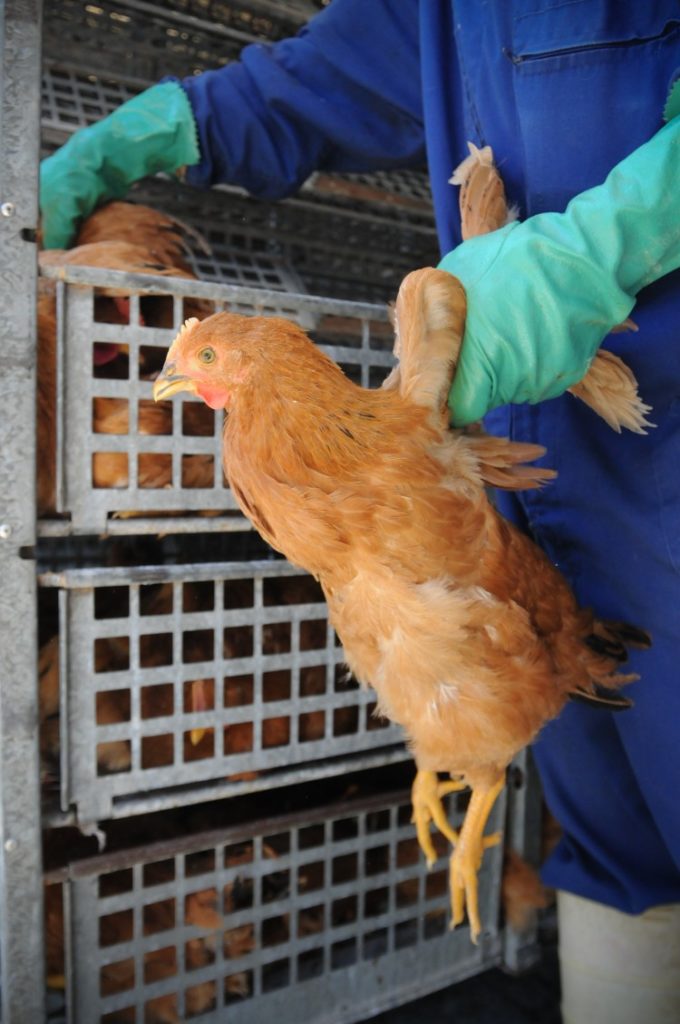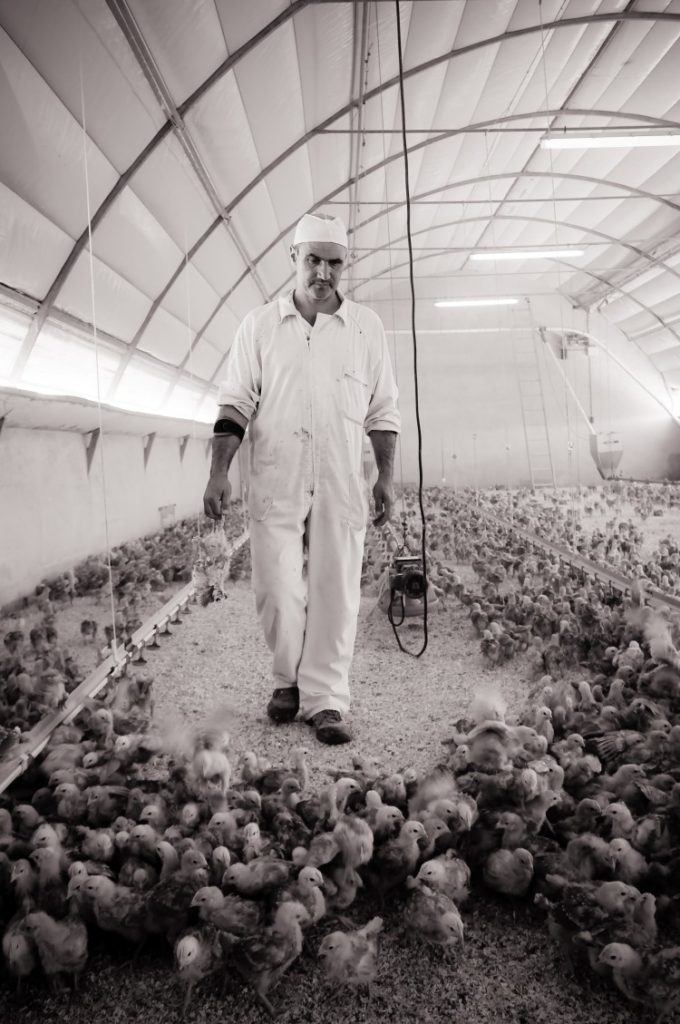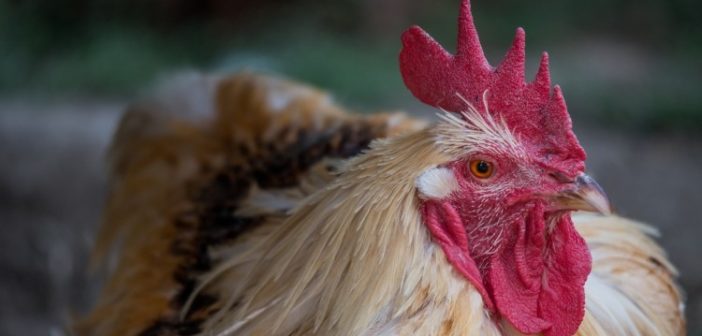Leah Garcés is the Director of Mercy For Animals, and previously launched and headed Compassion in World Farming in the United States. Recently, Leah also published the book Grilled: Turning Adversaries Into Allies to Change the Chicken Industry (Bloomsbury, 2019). In it, she tells about her own fight to help end factory farming. I found it a great read, and was particularly inspired by how she has worked together with the meat industry to help help make things better for animals and create a new food system.
Vegan Strategist: Chickens seem to have everything against them: they are small (so many more of them are eaten than cows or pigs), consuming their meat is seen as more healthy as eating red meat, and they seem less problematic environmentally than the bigger farmed animals. Plus, it’s harder to feel empathy for them. What is the best way forward towards helping them?

Leah Garcés: Before I answer this question, I think it’s worth noting that consuming chickens is hugely damaging to our health and to the environment. It’s actually even more harmful to both than eating beef is. The chicken industry contributes more to growing rates of antibiotic resistance, for example, and due to the number of chickens raised in the United States and the way their waste is managed, the chicken industry is a major (largely unregulated) polluter. Too often, we look at environmental impact only through the lens of greenhouse gas emissions. But all the arable land used to grow feed for farmed animals is also destroying precious ecosystems—such as in Brazil, for example.
Because the vast majority of land animals raised for food are chickens, helping them means transforming our entire food system, which is no small task! Our theory of change for chickens involves encouraging companies to improve how chickens in their supply chains are treated while compelling them to remove chicken from their menus and add plant-based products. We can do this in so many ways. We can show companies that relying on factory-farmed birds is a major risk, both because the system is inherently weak and because consumers are demanding better choices. By working with chicken farmers, we can help them find a way out of the exploitative contracts binding them to major poultry companies––and help them transition to growing crops, like beans or hemp. We can leverage our supporter base and social media audience to support plant-based companies and the restaurants that serve their products.
Suppose you had to make an elevator pitch for the chicken. What would it sound like?
Did you know chickens have superpowers? They can see colors we can’t see and orient themselves in the earth’s magnetic field. They can count and do math when they are one day old! Chickens can see both close and far away at the same time. They empathize, deeply feeling the joy, fear, and pain of their flock mates and babies. We often overlook them just because they’re different from us. But they’re truly remarkable and worthy of our love, respect, and protection—just as much as our companion animals.
Most of your book is about animal protection advocacy, but you also spend a significant part on the new alternatives that are being developed, including cultured meat. Which of the two are you expecting to have the most impact in the coming days? Have you ever been tempted to get involved in the business side?
I really don’t see it as a binary choice. I see the advocacy as the why and the plant-based and cultured meat market as the how. One cannot exist without the other. It’s a mistake to think that a business solution alone can liberate animals from our food system. Businesses don’t emerge and succeed in a bubble. Plant-based and cultured meat businesses emerge and evolve because we’ve succeeded at two things: we’ve steadily increased the external cost of animal products through welfare measures, and we’ve raised awareness of the cruelty, environmental degradation, and injustices of our current protein-production model.
As advocates, we create enormous social capital for these products. Imagine if a soda company had the kind of social capital that the plant-based meat companies have, where nonprofits literally demand that you not only exist but dominate. It is a dream come true for a business and will accelerate their success. Now think of the reverse—precisely what is happening to soda. Imagine nonprofits opposing your business. Advocates create and take away social capital. Businesses succeed and fail by this social capital. Advocacy groups play a critical role in accelerating and shaping market change and, ultimately, the success of plant-based meat, dairy, and eggs. I am 100 percent confident that they must continue this effort for many years to come. Otherwise these businesses won’t be successful.
While I have been tempted to go into the business side of things, I think many people have the skills to do that, and they don’t have to be passionate about animal rights. I believe I’m uniquely useful as a strategist and advocate for animals.

You discuss the stories and tactics of different parties in your book. Some are more aggressive than others. How do you feel about aggressive versus more diplomatic campaigning, and on what basis should activists choose between them?
We need many different pressures and interventions to succeed, especially when we are trying to change such a big system, like our food and farming system. It’s good to have an array of strategies working in tandem to exert pressure from all angles. You should choose what you are good at, what you feel bears the highest impact, given your unique skills. For me and Mercy For Animals, it’s always been a mix of both sides of the spectrum. I believe we should always offer dialogue first—it’s more efficient, for one. But if that doesn’t work, then undercover investigations and campaigns are necessary to force that dialogue.
What’s your answer to the perennial objection to welfare improvements, that they could lead people to become complacent and hence that this would not be helping us towards the abolition of animal agriculture?
There are two reasons for campaigning for welfare improvements and no reason to leave these improvements in the hands of individual consumers. We spend too much time considering individual consumers and not enough time on the systems that people make choices in. The first reason welfare improvements are important is the animals themselves. Imagine you were a prisoner in a terrible prison on death row. Would you want people to advocate just for an end to the death sentence or also for improved conditions in your terrible prison? You would want both, and the 81 billion animals trapped in factory farms globally today want both. Abolishing the whole system will take time. In the meantime, we owe it morally to these animals to reduce their suffering. The second reason is that welfare improvements bring up the price of meat, dairy, and eggs. The laws of economics are clear on this point: as price goes up, demand goes down. In fact, few things drive demand more than price. So clearly the price has to go up for people to eat fewer animals, and the alternatives need to be cheaper than the animal-based versions and as easily available.
You write: “I’d be accused time and time again—by both animal activists and the companies that contracted these farmers—of being too sympathetic toward factory farmers, of having the wool pulled over my eyes.” Can there ever be truth in that? If so, how – being so close to them – can one avoid being seduced into accepting measures and initiatives that don’t mean much?
As advocates for change, we do need to be sensitive about which animal welfare policies we accept and promote and recognize which are insufficient. I keep this top of mind during my negotiations.
I am up-front with farmers and meat industry executives about my end goal—to create a plant-based world—but they also understand that I’m excited to see incremental progress on animal welfare and plant-based innovation. It’s a constant balancing act, but I’m very happy with the results of this approach: extensive media coverage, corporate and legal progress, and bringing in allies from outside the animal protection movement.

You talk about finding common ground. I’m guessing it would be much more difficult to find any common ground for activists who don’t want to talk about or appreciate welfare improvements?
I don’t think that’s true. In fact, after many years of building a relationship with Perdue, the company began exploring plant-based alternatives to their chicken products. Jim Perdue himself said, “Our vision is to be the most trusted name in premium protein.” He didn’t say “premium animal protein.” That is hugely significant. While some might not like welfare improvements, you have to recognize that the pressure to explore plant-based protein emerged from welfare improvement discussions. I see plant-based protein work as a natural extension of welfare improvement work.
You didn’t really find evil or badness at the level of the farmers. I guess then it’s tempting to think that the evil can be found one level up, with the business people directing the farmer. But did you find it there?
I didn’t find anyone I was able to have a conversation with inherently evil. Where many activists might see the meat industry as a monolithic beast to be destroyed, we could instead see lots of individuals just like you and me, just trying to do their jobs. These individuals want, for the most part, to behave well, but they’re constrained by economics. The key is to hack that economic formula with a solution in which everybody wins. People who were willing to talk and listen were genuinely interested in learning and making progress. They often didn’t know how, and that’s where I tried to be useful. However, many companies and executives have refused to pick up the phone, meet me, or answer an email. They are not ready or willing to admit that change is needed in our food and farming system. So in those cases we have to use things like investigations or campaigns to help achieve dialogue. But I almost always find that once we get to that conversation, to sitting at the table together, far more possibilities for progress exist than either of us initially thought.
You write: “In order to end factory farming, we cannot ignore these farmers and their struggles. We must create a future with them in it.” How do you see their future? What options do they have?
Instead of thinking about how I could put factory farmers out of a job, I started to consider how I could find them different jobs, like growing mushrooms or hemp. In fact, a farmer I later worked with made just such a switch. When Mike Weaver of West Virginia became fed up raising chickens, we teamed up to film and expose what was really happening behind the closed doors of his warehouses. But Mike didn’t stop there. It turned out his chicken farm wasn’t much different from the farms needed to grow hemp. Now Mike grows hemp, an environmentally friendly way to stay on his land and pay the bills. It’s the ultimate win-win and one Mike, the once chicken factory farmer, and I, the vegan animal rights activist, can both get fully behind.
You write: “It soon became clear to me that they [farmers]were trapped by the factory-farming system, just like their chickens were.” Can you tell us something about the lives of farmers, that can make us, vegans and animal activists, more sympathetic towards them? What was it especially that moved you?

When I met Craig Watts, he’d been factory farming chickens for 22 years for Perdue, the fourth-largest chicken company in the United States. When Craig was a young adult, he searched for a way to stay on the family land that had been passed down for five generations, in one of the poorest counties in North Carolina. Very few jobs were available, so when Perdue came to town and offered him a contract to raise chickens, it was like a dream come true. He took out a $250,000 loan to build the chicken houses. Perdue paid him for each flock he raised. With that money, he began paying off the loan.
But soon the chickens became sick—after all, this was a factory farm. He struggled to pay off his loan. When the chickens got sick, they died, and you don’t get paid for dead chickens. So while the paychecks got smaller, the bills kept coming. Soon he wanted out. But he was all but an indentured servant. He hated raising chickens, but if he stopped, he’d risk losing everything.
By the time we met, he’d reached a breaking point—his birds were sick, and payments seemed never-ending. He also realized that he couldn’t live with Americans not knowing the truth about how chickens were treated. I had been very scared to meet Craig. But when I listened to Craig’s story—his struggles and his own surprising hatred for the system—my fear dissipated and something else replaced it: shame. He was the kind of person I had spent my whole career angry at, blaming, and ready to fight. It’s easy to hate someone you’ve never met. I’d not once considered his strife or asked myself, “Could he be an ally?” Craig felt trapped. If I could offer him a way out, he’d take it. The experience really changed my perspective on how to solve hard problems.
Is/was it hard for you to bring up this collaborative attitude or did it come naturally to you?
My nature is very practical and oriented toward goals and solutions. But at points I just carried anger. Anger usually doesn’t get me anywhere except tired and pessimistic. I have studied and read a lot about nonviolence as a strategy for achieving social justice. Gandhi and King followed this principle, and many scholarly articles and books about this are very useful to the work we do.
Ultimately, I always wanted to make progress toward a goal, even if only in small steps. This meant finding points of agreement wherever I could and seeking out people committed to our commonality and that progress.
You write: “Now that I had kids, I didn’t want to waste any time doing anything else except helping farmed animals.” I’d say many parents might withdraw after having kids, yet you seem to have doubled down on your target.
When I had kids, something switched in me. Time became very, very precious. Children have a way of making you realize that life is passing by much more quickly than you’d realized and life is short. If I wanted to make an impact, if I wanted to leave the world better than I’d found it, there was no time to waste. It forced me to ask questions of myself, like, “What is my purpose in my life?” The answer is to reduce suffering. So I looked for where the most suffering was and where I was uniquely positioned to reduce that suffering. I had witnessed so much suffering at the hands of humans, but I felt the cause of greatest suffering was tractable. That was, of course, the systems that exploit farmed animals.
Not so long ago you became the CEO of Mercy For Animals, and you have three children. How did you ever find the time to write this book?
Relentless focus. I carve out my time meticulously. Sometimes every minute of my day is accounted for and calendared out. I first wrote an outline of the book and then worked to fill it in. I set a weekly goal of the number of words I wanted to write and stuck to that. It wasn’t much per week, but I did it every week without fail. It’s amazing how much you can get done when you break a big goal into bite-size pieces and just stick with it.
How would you compare working for Compassion in World Farming (CIWF) with working for Mercy for Animals?
At CIWF USA we focused primarily on positive corporate engagement. At Mercy For Animals more tools are at my disposal—from undercover investigations and large campaigns to celebrity support and a big social media platform.
Suppose all people went vegan tomorrow, what, if any, place or future can you see for the ducks and chickens that you love so much?
Well, in my fantasy world, they become companions to humans, loved and cherished as much as our dogs and cats.
Featured image: a rescued chicken at Edgar’s Mission. Image credit Jo-Anne McArthur / We Animals.





